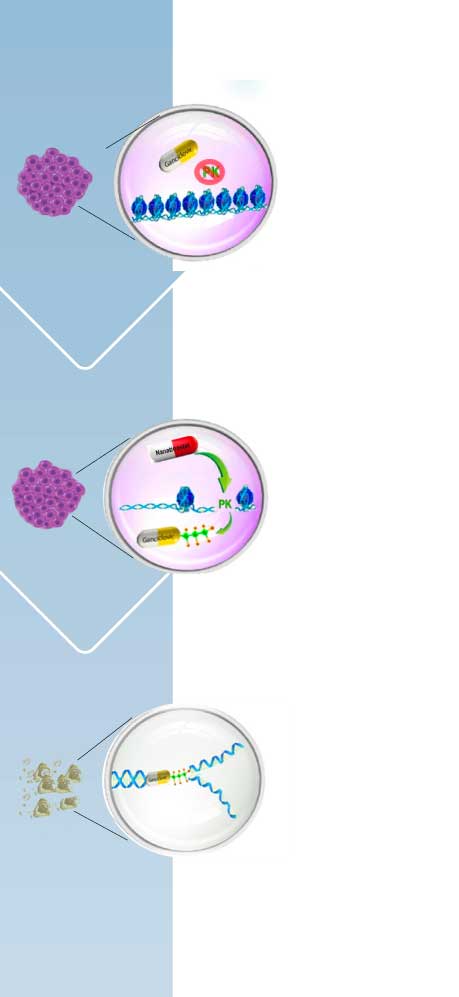Nana-val “Kick and Kill” Mechanism of Action




EBV is latent in cancer cells and viral kinase genes are silenced epigenetically. Valganciclovir, an antiviral prodrug of ganciclovir (GCV), is inactive in the absence of the expression of the viral protein kinase (PK)
Nanatinostat selectively and potently induces expression of EBV protein kinase (PK), which activates GCV and converts it to its cytotoxic form
Cytotoxic GCV inhibits DNA replication by chain termination leading to apoptosis in EBV+ cancer cells. This combination approach is a form of synthetic lethality
The association of viruses and cancer has been well characterized.
EBV, a member of the γ-herpesvirus family, was the first virus directly implicated in the development of a human tumor and is formally classified as a Group 1 human carcinogen by the World Health Organization (WHO). Primary infection with EBV typically occurs in childhood, occurring first in the nasopharynx and is generally asymptomatic; however, infection later in life may manifest as infectious mononucleosis. Once infected, individuals remain life-long carriers of the virus, with more than 90% of the world’s population asymptomatically infected with EBV. The EBV genome can be detected in approximately one out of one million circulating B lymphocytes.

EBV enters periods of latency during which most viral genes are epigenetically suppressed, as depicted in the figure below. In some stages, no viral proteins are expressed on the cell surface, making it difficult to develop broadly effective immunotherapies targeting the virus.

Latent infection and intermittent reactivation are two important characteristics of the EBV lifecycle. The maintenance of latent EBV infection requires the expression of a small subset of genes, and specific expression patterns (Types I – III) of these genes are associated with specific EBV-driven malignancies. EBV has been shown to infect B-cells, T-cells, T/NK-cells and epithelial cells, though its greatest predilection is for B-cells. EBV has been associated with a wide spectrum of human malignancies, including EBV+ diffuse large B-cell lymphoma, not otherwise specified (“EBV+ DLBCL, NOS”), Burkitt’s lymphoma (“BL”), post-transplant lymphoproliferative disorders (“PTLD”), and lymphomas associated with congenital and acquired immunodeficiencies, including HIV-related lymphomas.